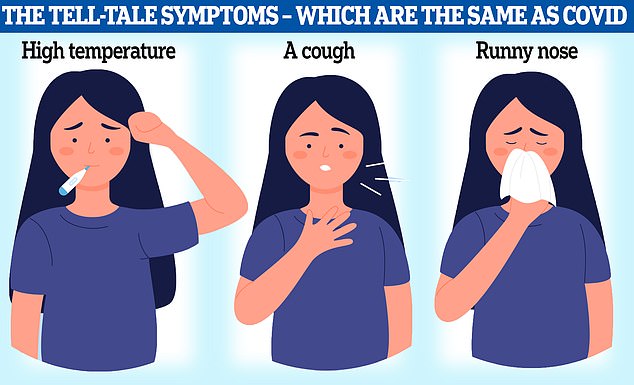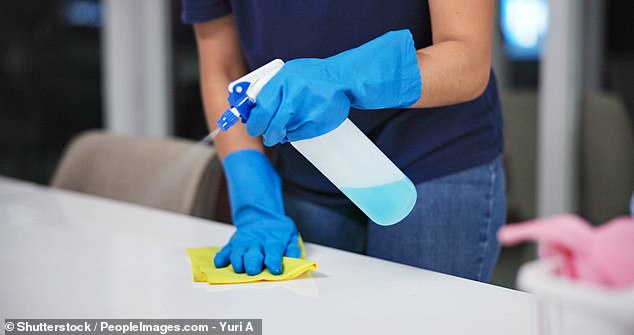Experts have revealed the most important surfaces to disinfect amid surges in winter illnesses.
The United States is experiencing skyrocketing rates of diseases such as flu, RSV, Covid and norovirus, totaling 15 million cases and 30,000 deaths so far this winter.
Hospitals in states like North Carolina and Massachusetts have even returned to requiring the use of masks to help slow the rate of illness.
And amid what experts have called a “quadremic” of winter infections, the CDC is monitoring rising rates of human metapneumovirus (HMPV), a respiratory disease ravaging China’s hospitals.
While health officials have stated that increases in HMPV cases are “not currently a cause for concern in the US,” federal data suggests rates have doubled compared to last year this same year. time.
HMPV and other respiratory diseases are transmitted through droplets that circulate in the air when talking or coughing, as well as by touching contaminated surfaces such as countertops.
To help slow the spread of HMPV and other winter illnesses, health experts recommend disinfecting high-touch areas, such as light switches and doorknobs, as well as kitchen and bathroom surfaces.
Even dirty clothes, carpets and cell phones can harbor HMPV disease, which hospitalizes 20,000 children under five in the United States each year.
Health experts have warned that HMPV can live on surfaces such as countertops, cell phones and children’s toys (file image)
HMPV first emerged in 2001 and typically causes symptoms of a common cold, such as cough, fever, and runny nose.
But more serious symptoms, such as bronchitis, bronchiolitis and pneumonia, can occur, and patients experience shortness of breath, severe cough or wheezing.
Tens of thousands of Americans get HMPV each year, but few get sick enough to need treatment and testing.
Researchers estimate that one in 10 respiratory illnesses in American children is caused by HMPV.
Because the virus is usually mild, its exact mortality rate is unknown. But experts estimate that between 10 and 30 percent of patients hospitalized with HMPV die in the United States.
There are no vaccines or specific treatments for the disease.
HMPV is believed to live on surfaces for several hours.
The CDC recommends focusing on cleaning high-touch surfaces to minimize the risk of HMPV. These include light switches, doorknobs, stair railings, and even mobile phones.
The agency suggests cleaning these surfaces with soap and water before disinfecting them with sprays or wipes.
According to the CDC, the most effective disinfectants are labeled broad-spectrum, meaning they kill a wide range of bacteria and are fast-acting.
Children’s toys should also be washed and disinfected, as children are the group most likely to contract HMPV.

Experts have warned that HMPV, which produces flu-like symptoms, can remain in the body for days and can therefore easily be transmitted to other people.
Recent research by cleaning products company Dettol found that eight out of 10 soft toys harbor dangerous bacteria such as E coli. Additionally, nine out of 10 toys fall to the ground, where HMPV has been found.
The company also found that three out of four children’s toys are never cleaned.
Ottawa Public Health in Canada recommends removing toys from your play area and placing them in a separate container. Toys can be cleaned with a brush and hot soapy water to get into the crevices.
They should also be soaked in disinfectant for the duration indicated on the disinfectant label before air drying.
The CDC recommends cleaning and disinfecting surfaces after entertaining and after a household member recovers from an illness such as HMPV or the flu.
Disposable products like toothbrushes and sponges should also be replaced, as bacteria can live on the bristles and reinfect you.


